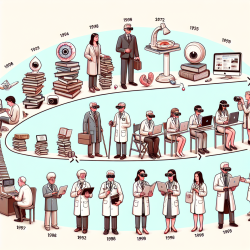Introduction
In the rapidly evolving world of healthcare technology, the use of electronic medical records (EMRs) is becoming increasingly prevalent. However, the challenge of maintaining patient privacy while utilizing these rich data sources for research persists. The research article titled "De-identification of primary care electronic medical records free-text data in Ontario, Canada" provides valuable insights into overcoming these challenges. This blog post explores how practitioners can leverage these findings to enhance their skills and encourages further research in this vital area.
The Importance of De-identification in EMRs
EMRs contain a wealth of information, including lab results, prescriptions, and patient histories, which are invaluable for research. However, the narrative free-text portions of EMRs often contain identifying information, posing a significant privacy challenge. The research by Tu et al. (2010) focuses on modifying the open-source deid software to effectively de-identify free-text data in primary care EMRs while preserving clinical content.
Key Findings and Their Implications
The study highlights the successful adaptation of the deid software for the Ontario context, achieving a sensitivity of 88.3% and specificity of 91.4%. These results demonstrate that the software can be modified to accurately de-identify free-text EMR records. Practitioners can implement these findings by:
- Utilizing modified de-identification tools to ensure patient privacy while conducting research.
- Collaborating with IT specialists to customize de-identification software for their specific needs.
- Encouraging the development of further tools that can de-identify data at the extraction point.
Encouraging Further Research
While the study provides a robust framework for de-identification, it also opens avenues for further research. Practitioners are encouraged to explore:
- Developing more efficient de-identification tools that can be applied across different EMR systems.
- Investigating the integration of machine learning techniques to enhance de-identification accuracy.
- Exploring the ethical implications of EMR data usage and privacy preservation.
Conclusion
The research by Tu et al. (2010) is a significant step forward in the field of EMR data de-identification. By implementing these findings, practitioners can improve their research capabilities while ensuring patient privacy. As the healthcare industry continues to evolve, ongoing research and development in this area will be crucial.
To read the original research paper, please follow this link: De-identification of primary care electronic medical records free-text data in Ontario, Canada.










